How to Collaborate With Influencers in the Philippines
As best industry practices are redefined for social media and influencer marketing, it becomes apparent and vital that you collaborate with one, or risk losing audience attention. This is especially true for businesses in the Philippines or those seeking opportunities to tap the Filipino market.

Here in our country, influencers are a pillar of social media marketing, having ranked number one around the world for having the most users following influencer accounts. With that, you’d be remiss to skip out on opportunities to drive growth through influencer marketing.
Whether it’s with the help of an influencer marketing agency or directly tapping key figures, more brands are seeking collaborations with established Filipino social media influencers. But is it really just a process of reaching out to the most popular influencer and seeing instant results?
Well, no. Being in the business for as long as we have, we know that without the proper data informing you, that approach won’t cut it. In fact, it may just lead to losses. From identifying the best type of influencer to work with, talking to them, and ironing out project requirements, to driving results, this guide will help you achieve valuable gains from influencer marketing.
Not sure how to start collaborating with some of the best influencers in the Philippines this year?
The role of influencer marketing as a transformative strategy
Social media users in the Philippines are one of the most engaged audiences of influencers. Content published by creators are among those consumed in the four hours they spend on social platforms daily.
What impact has it had on brands and consumers alike?
Discover the role of social media influencers in changing brands and customers in this section.
Impact of social media influencers on consumer behavior
We’ve seen how consumers react to influencer posts and make decisions after consuming content. To be exact, this is true for 47% of Generation Z and 41% of millennials according to a survey by Inside Intelligence.
According to the survey, millennials and Gen Z alike choose to follow influencers and purchase products they promote. This direct impact influencers have on the bottomline – both for brands and consumers – is perhaps one of the strongest evidence of their importance for brands.
But apart from purchases, influencers also offer a breadth of benefits for your business. They impact top-of-the-funnel strategies, boosting your brand presence when needed. And they also help build a loyal customer base of repeat purchasers.
With that, there’s no doubting why they have become such a staple marketing avenue for brands. Let’s take a look at some specifics below.
The importance of influencer marketing for brands
The one defining advantage that influencers have over other digital marketing channels is their inherent ability to connect with their audiences. The best of influencers even masterfully develop loyal communities of their audiences – turning them into a mass of followers that trust their every word.
Because of this profound effect they have on audiences, they are able to offer the following benefits to businesses:
- Driving sales. Based on a survey conducted by Influencer Marketing Hub, 78% of marketers reported that collaborating with influencers help enhance sales performance.
- Fostering brand advocacy. Collaborating with influencers can cultivate a strong sense of loyalty and advocacy within their dedicated following. This helps significantly boost brand reputation and customer loyalty.
- Improved engagement and ROI. Influencer-generated content tends to have higher engagement rates than traditional advertising. These can generate up to eight times the ROI compared to other marketing strategies, emphasizing cost-effectiveness.
- Improved content strategy. According to a HubSpot survey, 63% of marketers said relatable content was the most effective. Brands can effectively use influencer-generated content on their platforms to enhance their content strategy and lend credibility to their messaging.
- Enhance customer trust. Influencers are perceived as authentic and relatable, leading to higher trust among their followers. The same Influencer Marketing Hub survey reveals that 21% of social media users aged 18-54 have purchased a product based on an influencer’s recommendation, showcasing the impact of influencer reach on consumer behavior.
By partnering with them, brands can tap into their established communities and leverage their influence to increase brand awareness, generate leads and, ultimately, drive business growth.
Benefits of collaborating with influencers in the Philippines
The Philippines is an ideal hub for launching influencer campaigns. This is underscored by the fact that, in 2021 alone, the number of influencer marketing companies jumped by 30% in a year, and it’s growing by the year.
That said, social media audiences in the Philippines are a prime demographic to reach through influencer marketing. Other evidence proves that it’s quite an exciting space to explore for brands and influencers alike:
- Broad reach and follower engagement. According to Star Gage, 51% of Filipino internet users actively follow influencers, highlighting a substantial and highly engaged audience that brands can leverage to enhance their visibility and raise awareness about their brand.
- Impact of influencers on consumer choices. 70% of online consumers in the Philippines rely on influencer recommendations when purchasing. This statistic highlights the substantial influence that influencers wield in shaping consumer choices.
- Authentic and relatable content. Filipino influencers have earned a reputation for producing genuine and relatable content that connects with their followers deeply. This ability to resonate with their audience has fostered a strong sense of trust and credibility, making their recommendations highly valued.
- Targeted audience segmentation. Filipino influencers possess a unique ability to attract and engage a dedicated group of followers who share specific interests and preferences. This presents an excellent opportunity for brands to connect with their ideal customers more effectively by delivering customized messages that resonate with their needs and desires.
- Enhancing social media presence, sales and ROI. Harnessing the widespread influence of Filipino influencers across diverse social media platforms can significantly improve a brand’s visibility and interaction with online audiences. By strategically collaborating with the appropriate influencers, businesses can experience a significant surge in sales and achieve a favorable return on investment.
Should your brand collaborate with influencers in the Philippines?
Influencer marketing has become a powerful and transformative force in digital marketing. With global brands set to invest billions in these collaborations and the country’s active presence on social media. How can your brand benefit from these effects?
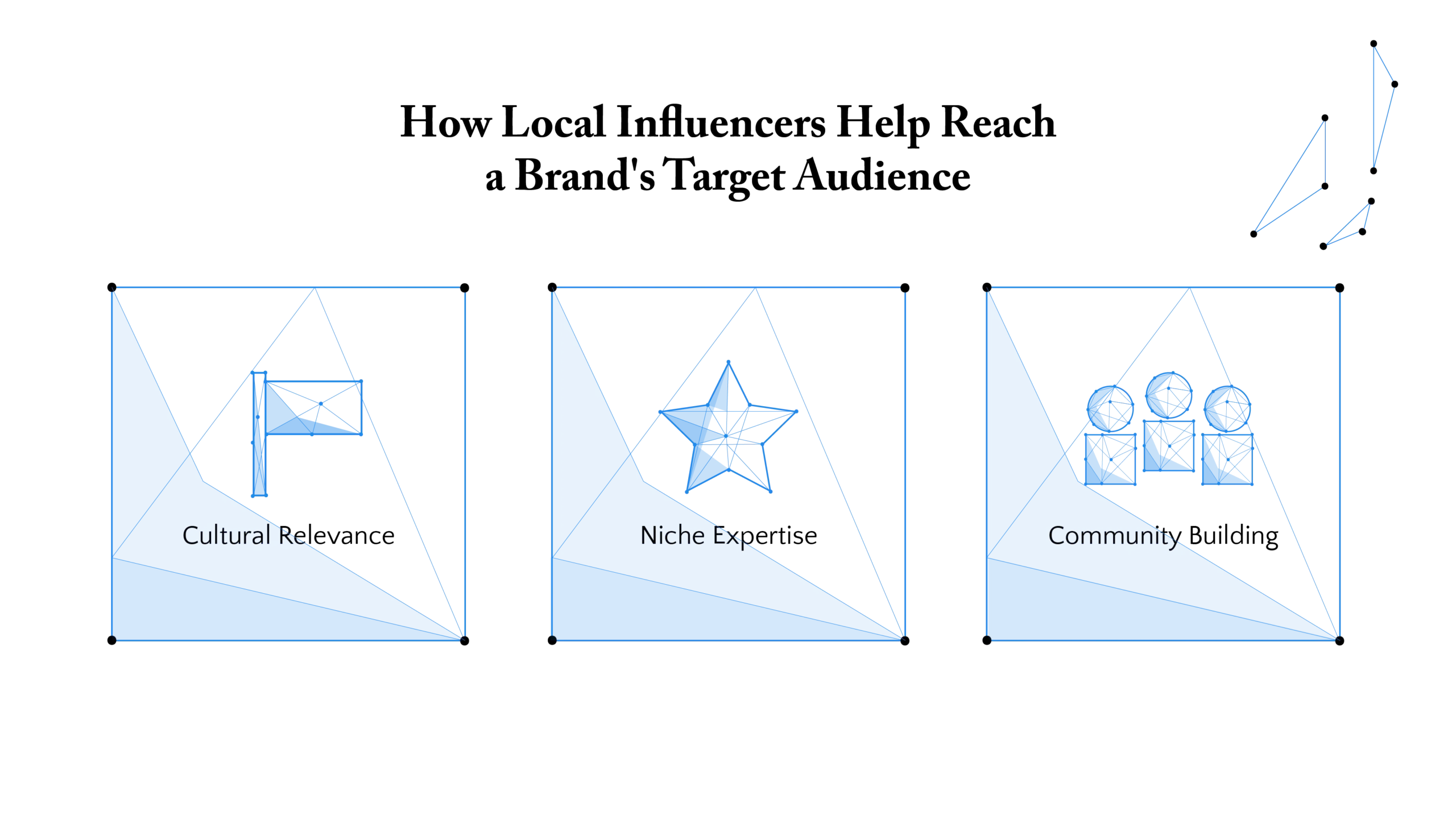
Filipino influencers often target specific groups and interests. Brands may strategically engage their target audience with a genuine interest in their products by partnering with influencers. How can influencers help brands reach their targeted audience?
- Cultural Relevance. Filipino influencers can effectively communicate in the local language and connect with the distinct cultural intricacies of the Philippines. They effectively utilize familiar references, humor, and traditions to produce content that genuinely resonates with their Filipino audience.
-
Niche Expertise. Focusing on areas like fashion, beauty, food, travel, and technology whereas fashion and beauty are the most popular content in the country (more on this in Chapter 5).
To effectively reach their target audience, brands can identify influencers whose niches align with their products or services. This ensures that the content is tailored to the right audience and increases the chances of successful engagement.
- Community Building. Filipino influencers excel at cultivating tight-knit communities centered around their content. Brands have the opportunity to engage with these communities to effectively promote products and generate impactful word-of-mouth recommendations, which carry substantial influence among Filipinos.
Leveraging brand-influencer collaborations in the Philippines is paramount as the country’s audience are a powerful driving force for expanding a brand’s reach and establishing a strong presence in the dynamic market. Add to that, the country’s audiences are highly engaged and have a genuine interest in influencer content.
The impact of influencer marketing on brands has been truly transformative. But while this strategy has helped brands amplify their reach, message, and credibility, there are still pitfalls to the strategy.
With fraud as one of the critical challenges it faces, scrupulous assessment of influencers are a must to ensure the authenticity and credibility of collaborators. Only in doing so can you start to reap the benefits promised by influencer marketing collaborations.
Aside from that, your next concern is where to execute your campaigns. Are there channels on which influencers prefer publishing on? And if so, what are these channels?
Let’s tackle it in the next section.
Top social media platforms for influencer collaboration
Social media platforms are an inherent and foundational aspect of the success of influencers.
Though an influencer’s expertise exist independently from these, there is no questioning the fact that social media platforms have helped them gain repute in recent years. Hence, it is an integral consideration for campaigns that seek to leverage an influencer’s help.
This guide will walk you through today’s most popular platforms for influencers and social media audiences alike so that you can build your strategies around what’s already working in the market.
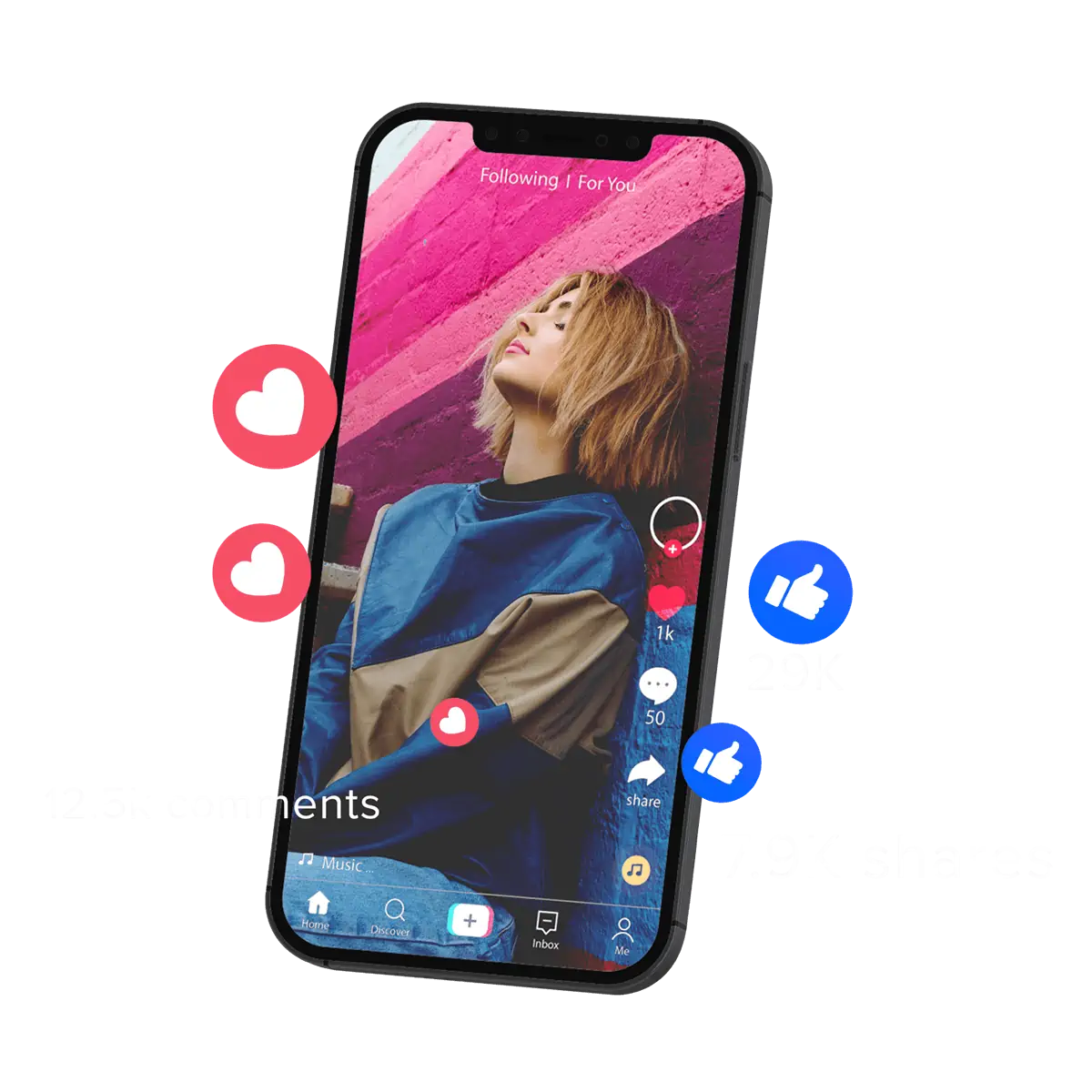
By now, you’ve gleaned insights into the role of influencer-brand collaborations for you and the larger industry you operate in. You are now ready to discover another integral aspect of your campaign which tackles the platforms on which to execute them.
And we get it: There is just far too much of them that it seems impractical to collaborate with influencers on each one. Hence, for this guide, we’ll draw focus on the top influencer platforms for consumer marketing and, specifically, in the Philippines.
The most popular influencer platforms in the Philippines
As far as social media platforms are concerned, Meta platforms Facebook and Instagram still dominate the playing field. For the Filipino audience in particular, Facebook is the most popular among users, while Instagram comes only as third.
However, it’s a different story from the perspective of Influencers. Citing once again the State of Influence in Asia 2021 report by AnyMind, we know they prefer Instagram for content publishing. But apart from the Meta platforms, TikTok, YouTube, and X (rebranded from Twitter as of July 24, 2023) are also popular among influencers.
Each social media platform has its own perks. Below is a quick breakdown of how they work to help influencers reach and engage with audiences online:
- TikTok. The youngest but highest on this list, TikTok works to help influencers reach their audiences with its interest- and behavior-driven algorithm. TikTok tracks a user’s app interactions, interests, and behavior, in order to recommend the most relevant videos possible – thus allowing influencers and brands with the same niches to reach audiences more directly than other social platforms.
- Instagram. This older app, on the other hand, makes use of visually appealing content to tell compelling stories that can showcase brand products and influencer experiences. Each part of the Instagram app uses its own algorithm, so by optimizing your content for each part, you can reach audiences more effectively today.
- YouTube. The most popular video platform on the internet to date, YouTube actually utilizes AI to recommend content to audiences. YouTube’s algorithm will better recommend a video if its channel uploads regularly and gets lots of viewership within the first 24 hours of a release – so make sure your influencer collaborators follow these tips on their channels,
- Facebook. An oldie but a goodie, Facebook utilizes its “personalized ranking” algorithm to distribute content to over 2.93 billion users. To leverage influencer marketing on this incredibly popular platform, make sure your collaborator is verified and has content that works for the personalized ranking algorithm, enough to reach audiences that are more likely to convert for your brand.
- X. While this platform has been undergoing lots of brand changes lately, it’s still popular among influencers and key opinion leaders today. This works best for B2B thought influencers who make concise, witty, and timely content, especially on trending topics and conversations.
What does this mean for brands?
It’s clear that social media platforms work to support influencers in many ways. But what can they do to help brands achieve their crucial business goals as well?
Before anything else, a brand must identify which platforms work best for its products, niche, and needs. If a brand is eyeing an influencer collaboration, then it should utilize a platform that it is already familiar with or has a strong following on to best leverage another collaborator’s influence.
Here are some examples of platforms and campaigns that brands can use to leverage specific digital marketing executions with influencers today:
- TikTok, for light-hearted campaigns. Given its younger user demographic, TikTok is best used for fun and light-hearted campaigns that aim to educate or entertain audiences. For these campaigns, it’s best to collaborate with TikTok influencers who can creatively discuss or promote your products in skits or interesting content formats, without heavy branding or hard selling.
- Instagram, for visually appealing content. Want to promote your fashion or cosmetics brand on Instagram? Then you need to level up your visuals in order to find success today. Whether you collaborate with an influencer to create sponsored posts, reels, or stories, you need to ensure that their production value is top-tier in order to be successful on this platform.
- YouTube, for long-form video content. Since this platform plays home to some of the most popular video creators on the internet, all you need to do is find the right influencer to produce long-form videos about your brand and its niche. These can come in the form of native product reviews and hauls, natural plugs, giveaways, tutorials, and more.
- Facebook, for native advertising. As the progenitor of most social media today, Facebook lets brands and influencers explore all kinds of marketing strategies on their platform. Given everything you can do on this app, try experimenting with native advertising instead. This should allow your brand’s promotions to come off as authentic and sincere instead of aggressive and overly promotional – as is the trend with most successful advertising on social media platforms today.
- X, for giveaways and competitions. This app is a great place for direct conversations with audiences, through influencers that have a reliable and established following. By hosting product giveaways and competitions on X, you can talk to audiences more instantaneously and receive feedback about your brand more directly as well.
Now that you’ve laid the groundwork for an effective collaboration on social media, you now need to know the top types of influencers that brands want to collaborate with today.
Check out the next section to learn more about the different types of effective influencers in this guide.
Connecting through influence – types of influencers for collaboration
Apart from platforms, another lever you can optimize in your influencer marketing campaigns is, of course, the type of influencer you work with.
Though every influencer has an inherent value to brands, there are many factors to consider when choosing a personality to partner with. Among these is the audiences they attract, their topic of expertise, and content themes, to name a few.
Collectively, these factors sum up to a way of categorizing influencers based on types that generally match specific needs for your campaign.

There are two main ways in which you can categorize influencers. The first is through the size of their following, dividing them into categories for a set range of follower counts. The other is by topic expertise.
The former category gives you a pretty straightforward approach to categorizing influencers that allows you to select them simply based on the estimated number of people you want to reach with your campaigns.
On the other hand, the latter allows you to add nuances to your campaigns. Such that allows you to determine an ideal collaborator based on the alignment of their expertise to yours. This then allows you to communicate information beyond your brand name (eg. features, benefits, and advantages) to an audience that may be interested in more details.
Remember that, at this stage of your campaign, it’s important to be discerning about the selection of influencers to collaborate with. As you peruse the information below, it’s best to be guided by an assessment checklist that helps you map out and align your expectations for the campaign and how the influencer can benefit your goals.

Types of influencers based on size
In the world of influencer marketing, there are different types of influencers that vary according to the size of their social media following. If you’re selecting an influencer collaborator based on this metric alone, it’s important to consider that numbers don’t always speak for themselves.
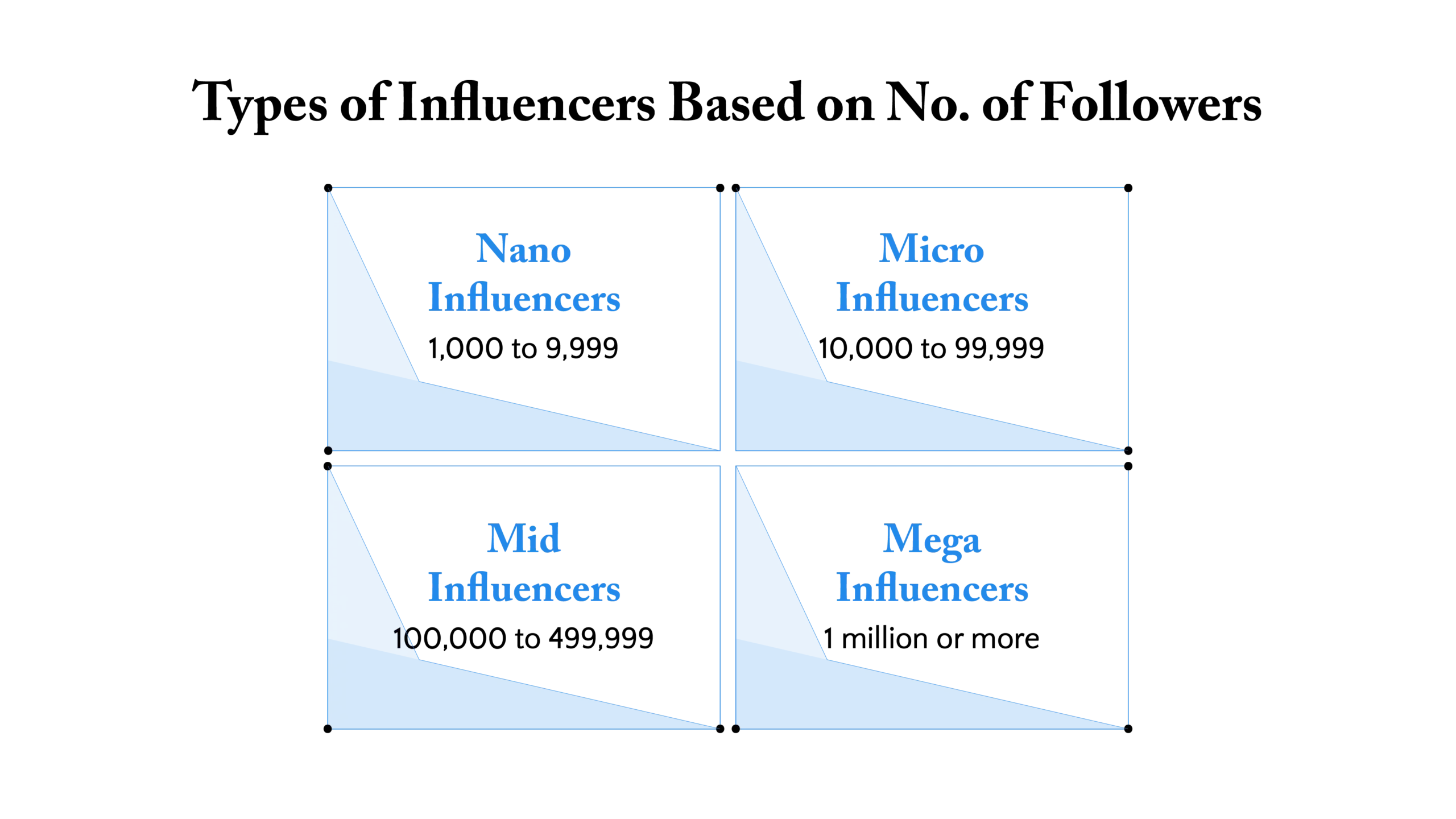
What do we mean by that? Well, for one, in an age of rampant spread of bots and fake accounts follower count can be misleading in terms of the true popularity of an influencer. Another thing is that, even if the followers are real people, they may not be engaging with the influencer and their content. With that, it’s best to view followers as a relative estimate of reach and engagements, keeping estimates on targets realistic to the historical performance of influencers.
To paint you a better picture, we’ve provided some pros and cons of collaborating with each.
1. Nano Influencers
Number of influencers: 1,000 to 9,999
This influencer has the least number of followers on this list. But although the size of their following is small, they often have one of the most engaged audiences. That’s because, at this scale, personal and authentic interactions with followers is still manageable.
They are also known for being experts in niche topics of interests – appealing to brands who want to connect with audiences whose interests are highly specific. Because of these shared interests they nurture stronger relationships with their followers.
| Pros of collaborating with them | Cons of collaborating with them |
|---|---|
| High engagement with their small, loyal following suggesting more authentic relationships and interactions. | Their reach is limited, so they are usually tapping a narrower audience compared to larger influencers. |
| Known for niche expertise, making them valuable for reaching specific audiences. | There might be a potential lack of professional experience in managing brand partnerships. |
| Collaboration is cost-effective for brands with limited budgets, as they charge lower. | They may not have as much influence as larger personalities in driving significant brand awareness |
2. Micro Influencers
Number of followers: 10,000 to 99,999
A micro influencer is an individual who has a larger following mid to mega influencers but larger than that of micro influencers. Their audiences are also highly engaged, similar to that of the micro influencer.
However, what makes them unique as influencer collaborators is they are able to drive a significant amount of authentic engagements as they tend to seem more attainable than mid to mega influencers. This is because most – if not all – of their content is reflective of their real-life experiences and tends to be more genuine.
While their influence isn’t as widespread as that of bigger personalities, your brand integrity will still develop through the sizable engagement of their followers. Many brands opt to collaborate with a number of micro influencers to mimic the reach of macro to mega influencers though it poses some challenges specifically concerning ease of coordination.
| Pros of collaborating with them | Cons of collaborating with them |
|---|---|
| Micro influencers may not have the reach of other higher-tiered influencers, but they can get your brand’s message across through improved audience engagement. | May be less effective for brands whose aim is to boost awareness to a massive audience because of their relatively smaller following. |
| Considered to be generally “budget-efficient” as they help brands reach a sizable engaged audience for a decent cost. | Collaborating with multiple micro influencers to mimic the reach of macro-influencers would mean time-intensive management for brands. |
| Have a local presence which makes them ideal for businesses found only in specific geographical locations. | Quality control may be challenging when working with a lot of micro-influencers whose tastes in content treatment and professionality vary. |
| Usually one of the easiest influencers to work with because they have enough experience and still show eagerness to learn and provide what’s asked of them. | Tend to be less experienced and equipped to produce higher quality content compared to mid influencers. |
3. Mid Influencers
Number of followers: 100,000 to 499,999
Mid influencers are rather unique as they usually have a wider reach and more meaningful engagement with their audience due to the number of their followers.
Being in a comfortable midpoint between micro and macro influencers, they usually generate high engagements similar to that of micro influencers while also having the broad reach of macro influencers.
This makes them a rather powerful group of content creators since they are adaptable to different kinds of marketing efforts such as social takeovers, promotional giveaways, contests, product demonstrations, and product reviews.
| Pros of collaborating with them | Cons of collaborating with them |
|---|---|
| There’s a good balance of reach and engagement percentage, offering access to a broader audience while maintaining meaningful interactions. | Higher collaboration costs compared to micro influencers make it difficult for most brands to access them. |
| Thanks to experience, they are adaptable to various marketing strategies, making them suitable for a diverse range of brand campaigns and promotions. | Audience demographics may vary more significantly, making it essential to carefully assess their relevance to the brand, especially for engagement-driven campaigns. |
| Relatability lends them potential for stronger credibility than influencers with a larger following count. | While they offer a broader reach than micro influencers, they don’t have the massive reach of macro or mega influencers. |
4. Macro Influencers
Number of followers: 500,000 to 999,999
Evidently, macro influencers inch close to mega influencers in terms of reaching a massive audience.
However, unlike mega influencers, they are relatively easier to reach out to for collaborations. Often, these kinds of influencers are managed by talent agencies which poses both benefits and disadvantages in terms of communicating and negotiating campaign requirements.
This is because on one hand, personal branding of the influencer tends to be more restrictive. But on the other hand, they still more pliable than mega influencers. Because of their large following, their engagements and following easily gain momentum and often perform similarly to mega influencers.
| Pros of collaborating with them | Cons of collaborating with them |
|---|---|
| They help brands access a large and diverse audience due to their extensive reach and exposure. | Audiences are less likely to interact, relate to, or convert as their content can lean toward the side of being overly promotional. |
| They are usually well-suited for brand campaigns that aim to create widespread awareness. | Considering the following-engagement ration, engagement percentage rates might be lower compared to smaller influencers. |
| Their popularity lends them greater credibility, thereby boosting the credibility of brand partners as well. | Because of their expansive reach, they become in-demand for brand collaborations. It is important to assess if previous collaborations with competitors have been engaged in. |
| Though their following is not as large as mega influencers, the size of their following allow campaigns to gain momentum quickly – often performing similarly or outperform campaigns with mega influencers. | Their collaboration costs are considerably higher than micro or mid level influencers, which may not be feasible for smaller or lesser-known brands. |
5. Mega Influencers
Number of followers: one million or more
Mega influencers are usually composed of celebrities, high-level athletes, or public figures who have developed a massive following on social media sites. They can greatly affect their followers’ purchasing decisions and have the power to reach a sizable audience.
In addition, the sheer number of their audience means that they can demand substantial fees in exchange for endorsing your products. These endorsements, in turn, can significantly increase your brand awareness, engagement, and credibility.
| Pros of collaborating with them | Cons of collaborating with them |
|---|---|
| They offer maximum reach and visibility hence, providing unparalleled exposure to a massive global audience. | Aside from their status and busy schedules, the strict brand screening of talent agencies may become a challenge for brands to reach out to them. |
| By being connected to a well-known influencer, the potential association with prestige and fame can elevate the brand’s image. | To preserve the image they have portrayed to their audience, there might be potential challenges in maintaining authenticity and relatability with such a vast audience. |
| Their sizable followers make them highly capable of generating viral marketing campaigns. | The risk of negative publicity being amplified on a large scale if the influencer faces controversies or backlash. |
Types of influencers based on topic expertise
The other way of categorizing influencers is by their topic of expertise irrespective to the size of their followers. Whether it be on sports, travel or gaming, approaching collaborations with influencers from this perspective draws focus on their ability to comment on industry trends with authority.
You can tell that an influencer falls under a specific type of expertise from what topics they frequently post about. This consistency helps maintain clarity and avoids confusing audiences, but also allows brands to ensure messaging alignment even at face value.
Below, we explain some of the most popular topics for influencers in the Philippines.
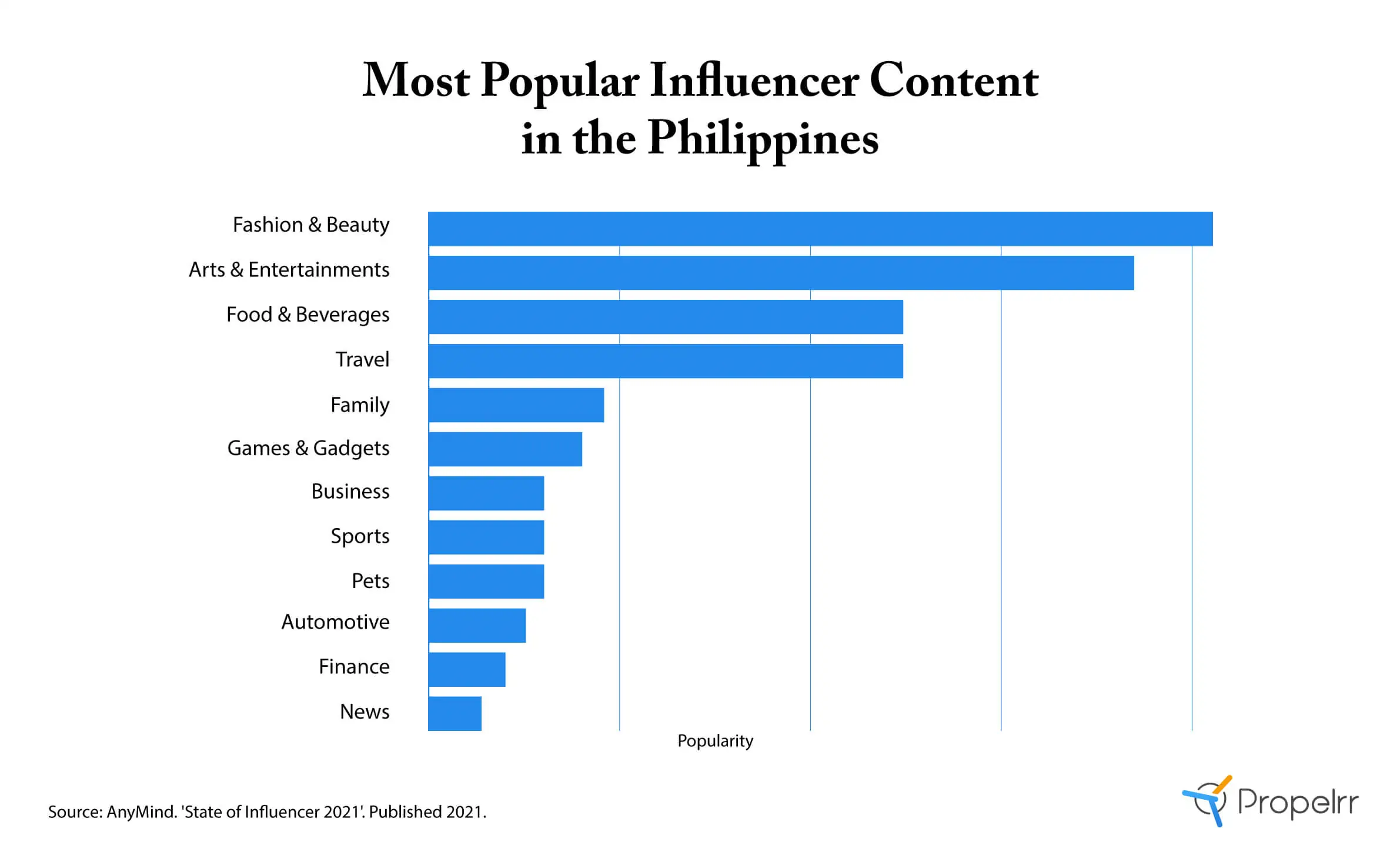
- Fashion influencers. Fashion-forward individuals who showcase the latest trends, style inspirations, and outfit ideas, influencing their followers’ fashion choices.
- Arts and Entertainment influencers. Individuals such as celebrities, adrenaline junkies, visual artists, and many more who showcase content that revolves around arts and other forms of entertainment that capture the interest of their audiences.
- Food influencers. Food enthusiasts who share their culinary expertise, recipes, and restaurant recommendations with their followers, catering to the growing interest in food culture.
- Travel influencers. Travel experts who explore various destinations, sharing captivating travel stories, tips, and recommendations, enticing their followers to explore the world.
- Gaming influencers. Experts in the gaming industry who live-stream gameplay, provide game reviews, and share gaming strategies and insights, catering to the vast gaming community.
- Tech influencers. Experts in the technology industry who review gadgets, software, and share some insights into the latest technological trends and innovations.
- Sports and fitness influencers. Sports and wellness enthusiasts whose content focuses on sports information, health, fitness routines, workout tips, and nutrition advice inspiring their audience to lead a healthy lifestyle and achieve their fitness goals.
In this section, we explored the various types of influencers based on the size of their social media following, ranging from nano to mega influencers. To reiterate, each category offers distinct advantages and challenges for brands seeking to collaborate with influencers for their marketing efforts.
As we delve into the next chapter, let’s discover how influencer marketing strategies are formulated and executed to harness the power of these influencers in driving brand success.
Five expert tips for scouting for influencers to collaborate with
Finding the right content creators to work with entails a thorough understanding of the prospective collaborator. Think of this part of the journey as your “getting to know” stage.
In this section, we hand you expert tips for scouting influencers to collaborate with in a way that best aligns with your campaign and business objectives.
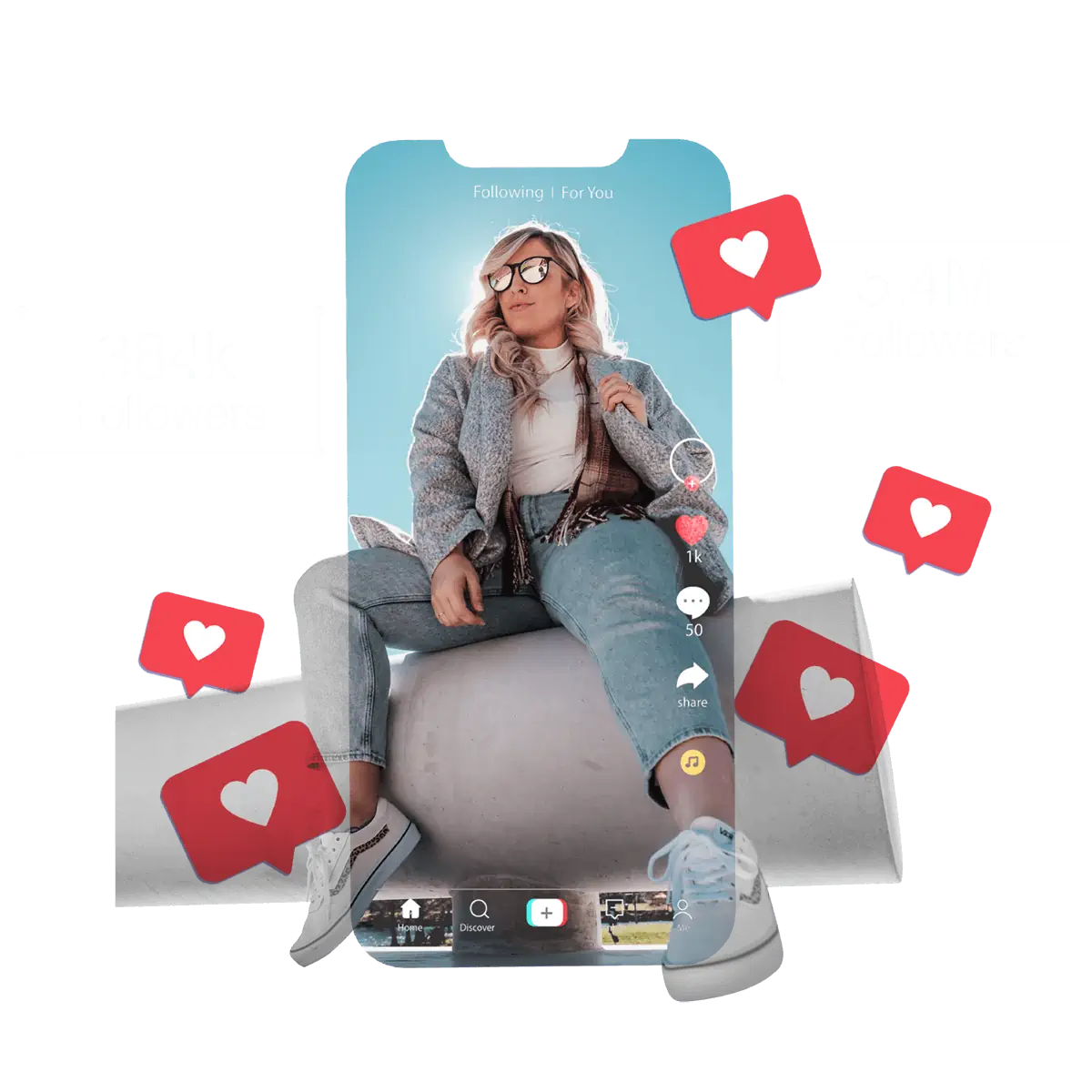
Before entering a partnership with anyone, you should understand how they work, what makes them unique as content creators, and if their values align with your brand’s.
Read the content below to learn tips from our internal influencer marketing experts, along with some handy templates you can use as a guide during your hunt.
1. Look beyond the follower count.
Here, it helps to look at quality over quantity. The ideal influencer partner for you can have as little as 2,000 followers if they’re talking to a highly engaged and targeted audience.
Whether you’re working with a nano or celebrity influencer, look beyond the headcount and see if these followers are 1) real people, and 2) engage with the influencer’s content.
Regarding the latter, you’ll also want to consider the quality of the engagements. Are the comments just random emojis, or are there conversations developing? More often than not, an influencer with a highly engaged audience outperforms other influencers with a big following.
2. It’s not always about the size of your budget.
Time and again, organic performance has proven to us that it is more durable than paid performance. So while a budget for boosting posts does help maximize reach and impressions in an instant, results from organic are sustained for longer periods.
That said, you can argue that your campaigns can perform competitively even with a modest budget.
Try to look into the ability of your prospective influencers to generate these organic engagements. If they show that they have a talent for this, then that’s something you can leverage with or without a large budget.
3. Check who your followers follow.
For any brand, there is no better source of information than the customer. Be it for your product design efforts or, in this case, hunting down influencer partners, the best people to ask are your audiences.
To do this, ask yourself: Who are your most important customers or audiences? Whose content do they consume? Whose opinions do they value? Though this may sound like a roundabout method, the payoff shows in a customer-centric approach to working on influencer marketing campaigns.
With this exercise, you discover an influencer to collaborate with and even develop an understanding of what kind of content – format, theme, topic, etc. – they lean towards. Use this information not just to identify a name and a face for your campaigns but, ultimately, use it to craft a campaign that resonates with your audience.
4. Leverage online tools.
Researching can eat up a lot of time. We know. But this is why we highly encourage you to leverage the wealth of tools available online.
In researching for influencers to collaborate with, we recommend BuzzSumo – a social listening tool that pulls up influencers from a keyword-based search. Below is a sample of its current dashboard:
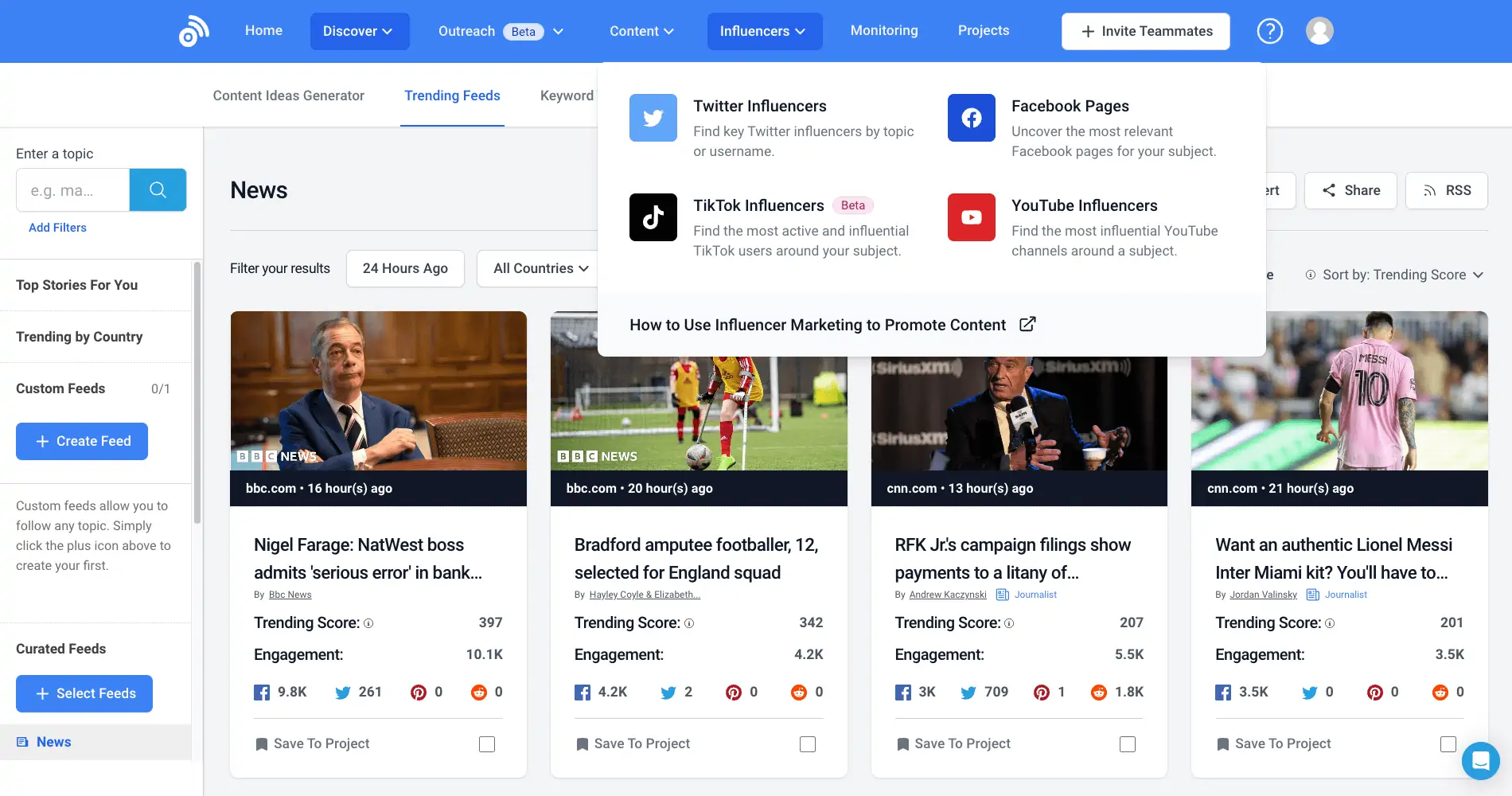
Image 7.1. A Screenshot Of Social Listening And Crawling Tool Featuring The Influencer Research Tab. Through Their Tool, You Can Search For Opportunities For Content Creation And Collaboration With Key Influencers Based On Platform And Topic Of Interest.
This is just one example of the best social media marketing tools you can use for research. At Propelrr, we’ve combined our knowledge of influencer marketing research with our development capabilities and created one ourselves.
Though, unlike BuzzSumo, our influencer module within our proprietary lead management system allows us to catalog influencers based on their relevance to brands. From here, we can track influencers we’ve tapped or are planning to tap for campaigns.
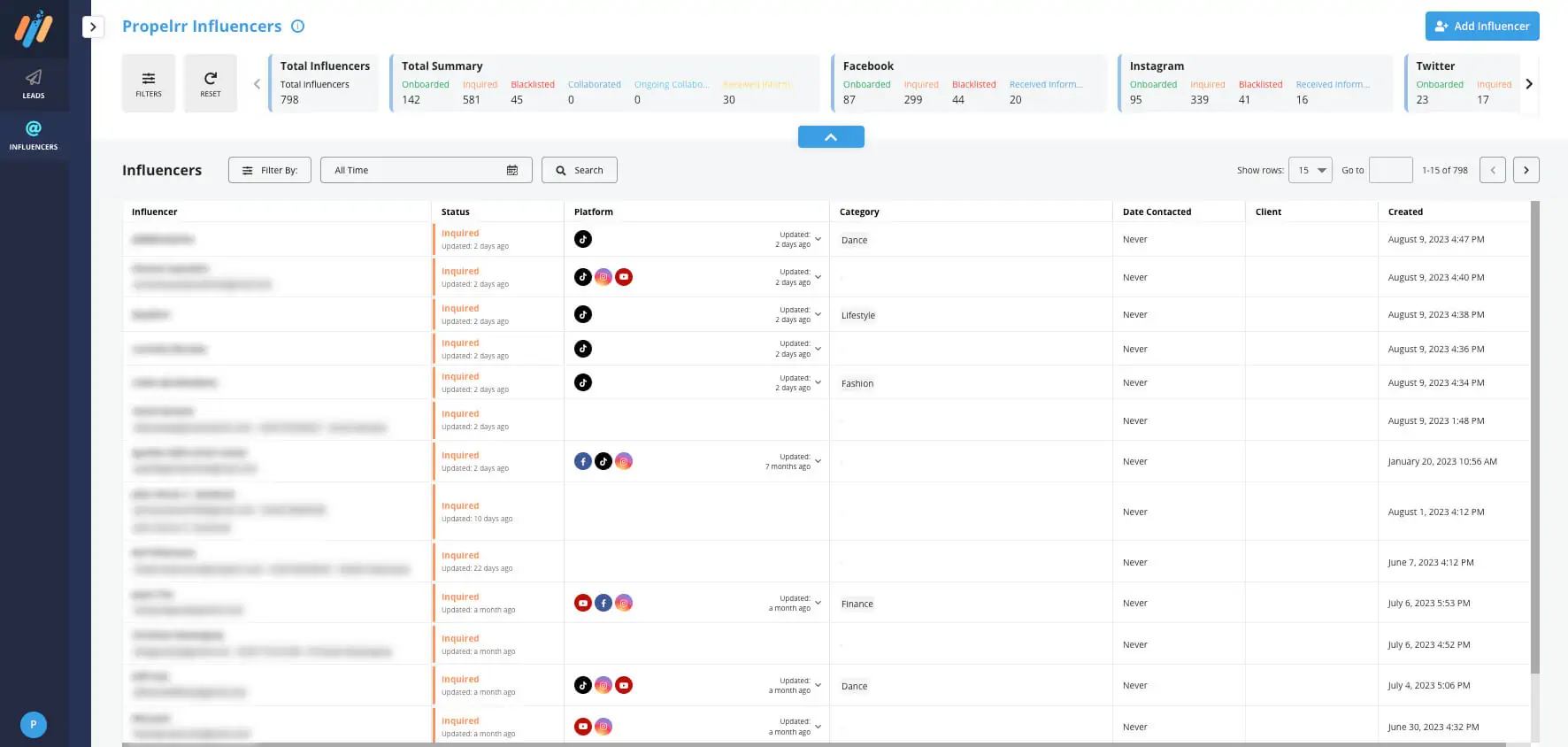
Image 7.2. Propelrr’S Proprietary Lead Management Software Features A Module That Allows You To View A List Of Influencers You Are Currently Engaging With Or Planning To Engage With. Photo Courtesy Of Propelrr.
Overall, this tool helps us stay on top of our influencer collaborations – always ready to provide the best recommendations for our partner clients.
5. Leave room to be impressed.
There are also influencers you don’t find impressive at first glance but achieve phenomenal results. Always leave yourself room to be impressed with influencers like this.
Even if they haven’t checked off all the items on your assessment and matchmaking checklist, it helps to test out a campaign with them. Maybe you can start small and see how it goes from there, whether you can build on it or not.
It’s not uncommon for influencers to grow alongside the brands they work with, after all.
As advocates for marketing experimentation, we consider this a constant effort and dedication to innovation. Allow yourself to miss a few things in your influencer collaborations – try new things and fail, then try again and win.
With an experimentation mindset, you’ll find that you build – not just stumble upon – business value for your brand and your influencers. Ultimately, you can even innovate and build upon what established “best practices” in your industry.
Leave a little room for people to impress you.
But mind you: Failures in testing can be minimized as long as your methods of collaborating are sound. In the next chapter, let us leave you with some industry best practices for collaborating with influencers.
Other considerations when scouting influencers
Rampant spread of misinformation and ingenuous personalities acting on the internet, audiences have developed a certain degree of caution in trusting content that’s published online. And, as an industry that is hoisted and anchored by trust, it’s not surprising that this has also impacted the perception of influencers.
From both the brand and audience’s perspective, influencers have a lot to prove – so much that authenticity has become an inextricable aspect of their effectiveness. Without a high level of perceived genuineness, an influencer can’t be expected to deliver the expected results of campaigns.
And while the influencer industry at large has yet to draw out clear standards for the practice, emerging technologies are coming in to bridge the gap or help clarify the nebulous aspects of influencer marketing. Apart from the tips above, here are some other important considerations when scouting for influencers that take into account these trends and how they are expected to impact the practice and industry:
1. Authenticity – the important pre-requisite
There are many dimensions to the authenticity of an influencer – from their followers to how much they actually know about their industry and, subsequently, communicate it. But it’s most easily faked through followers and engagements. While there are influencers who have toiled to build a genuine following and engagements, there are those who buy bots to balloon their numbers.
The latter kind can skew the important influencer metrics you should be looking at and could lead you to invest in fruitless collaborations. Worst of all, this fraudulent activity undermines consumer trust and makes them wary of disingenuous endorsements.
And if you think you can get away with it, think again. Nowadays, consumers are more vigilant and skeptical of endorsements. As they value a brand they can trust more and more, consumers are more adept than ever at recognizing instances where an influencer is endorsing a product solely for the purpose of monetary gain.
2. The challengers – AI and ML influencer campaigns
In response to the growing need to ensure influencer authenticity, the tech industry has developed algorithms to help bridge the analysis gap. Recent developments include the programming of artificial intelligence (AI) and machine learning (ML) technologies to help assess this for brand marketers.
According to IMH research, more marketers are using technology to create more effective influencer marketing campaigns. These also help improve influencer identification and aid in the search and distribution of campaign materials, boosting overall effectiveness. Due to their economic benefit and to reduce influencer fraud, a small, growing percentage (5.6%) of marketers expressed interest in using these technologies in combination.
3. Lack of resonance
Another important determinant for the success of an influencer is resonance with their audiences and brands. The influencer’s values must match the brand’s and the audience’s.
Significantly, 61% of customers believe influencer recommendations, compared to 38% who trust brand-produced material. 60% of marketers say influencer-generated content outperforms branded postings.
Despite the growing recognition of influencer marketing in the Philippines, brand budget limitations still need to be considered. The data shows that while 60% of brands are willing to spend up to 50% of their budget on influencer marketing, 40% of brands may need more financial flexibility to invest as much.
This highlights the ongoing struggle for some brands to balance their marketing objectives and financial limitations, which can impact their overall influencer marketing strategy and potential outcomes. While the preference for influencer budgets over brand accounts among users is evident, it may only sometimes crack into feasible budget allocations for all brands, making it vital for marketers to find innovative ways to optimize their influencer marketing efforts within their financial limitations.
With due diligence in selecting influencers, you should have little to worry about their effectiveness in contributing to campaign performance. With the right influencer-brand-audience matching, all there’s left to ensure is the quality of your activations and the manner in which you manage them.
In the next chapter of this content, we’ll provide you with some best practices so that you can achieve the best possible results with your influencer collaborations.
Boosting your campaigns – best practices in collaborating with influencers
Explore the different aspects of influencer marketing and discover how you can maximize this strategy for your brand.
These best practices for working with influencers will detail how you can maximize them for your current and future campaigns. Regardless of the type of influencer you’re collaborating with or the campaign requirements, these best practices are a good foundation to build so that you can ensure the delivery of the best results possible.
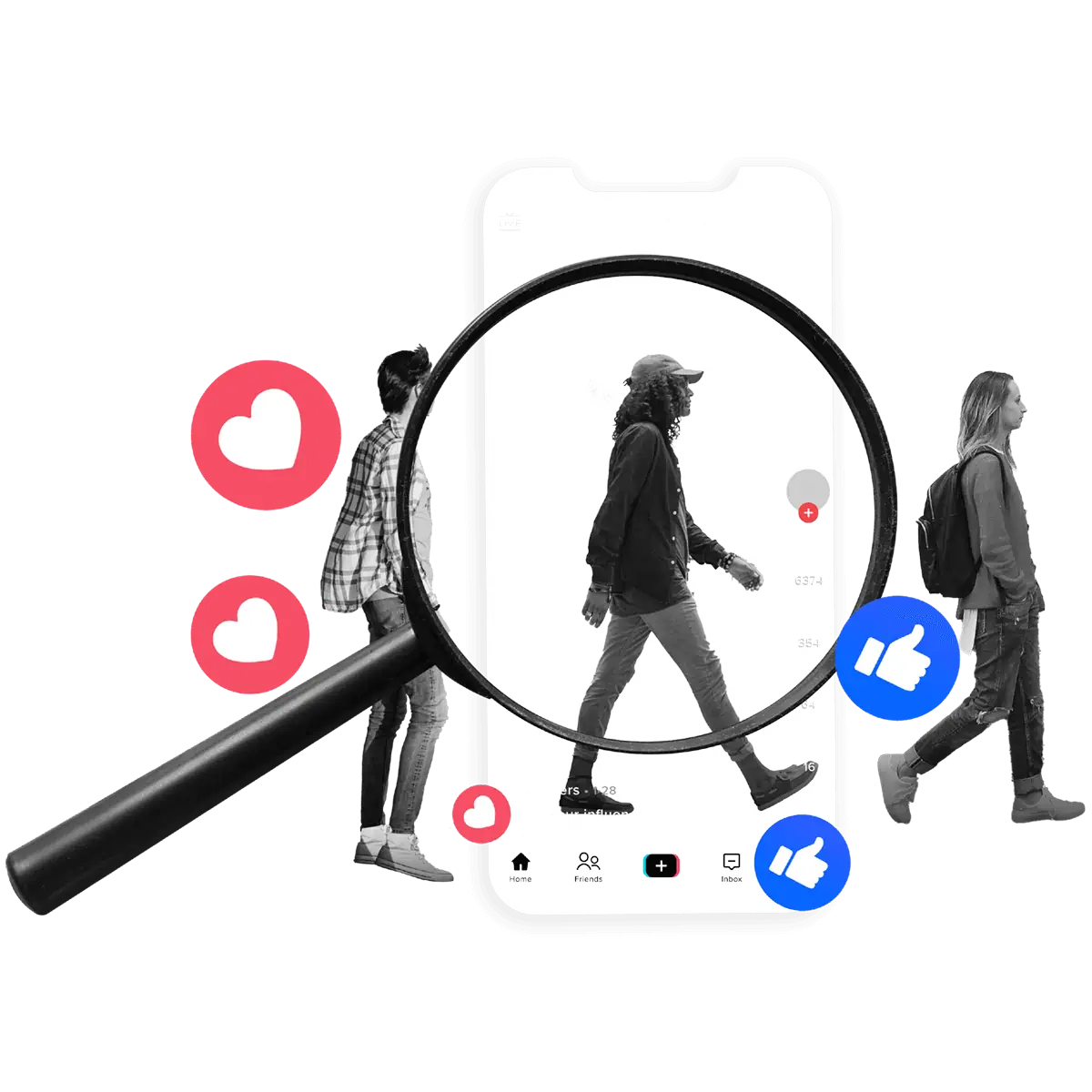
An influencer marketing collaboration involves a series of steps ranging from knowing the types of influencers you ought to collaborate with to incorporating the best practices for working with influencers. Considering the impact of influencer marketing in the Philippines, being able to scout a good set of influencers is a great start to influencer collaborations. However, it is only the first step.
5 best practices for influencer marketing collaborations
With years of experience working with various brands and figures, it is undeniable that the initial stage of the partnership should be followed by an observation of best practices for working with influencers to ensure fruitful and long-term term collaborations.
Below are some influencer marketing best practices that were found effective:
1. Communicate your goals and expectations clearly.
What happens at the beginning of an influencer collaboration is crucial in achieving a successful partnership in the long run. Once you have identified the influencers who can help address your marketing needs, you can then start with a brief discussion of what your brand needs and providing an overview of what your brand requires in the partnership.
Next is the establishment of requirements, discussing what is expected from the influencer in detail and other information they might need in accomplishing their deliverables. Apart from these, it is also important for your brand to ensure that the influencer is well-informed about the specifics of the partnership such as products, specific types of content for posting, some branding guidelines, and visual pegs.
Communicating these details clearly would not only help in ensuring that both parties are performing based on what’s expected of them but also in avoiding conflicts that revolve around miscommunication, lack of transparency, and negligence.
Use a guide to secure that these necessary details are all covered and well-established. Download a copy of this comprehensive influencer content brief template for your next influencer partnership.

2. Give influencers room to get creative.
There are instances when brands want to make sure that every project is executed well up to the tiniest detail and sometimes make the mistake of sticking to hard-sell marketing that involves aggressive selling or promotion of brand offerings, and that’s totally understandable.
However, as this may limit the influencers’ creative freedom, it’s imperative for brands to give influencers a space to let their creativity flow and voice out their ideas so they can grow not only as individuals but also as artists. Instead of forcing them to use the traditional marketing practices and ideas preferred by brands, influencers can use their skills as creators and transform such executions into something fresh and innovative.
You can establish this by assuring them that they can comfortably share their ideas and concerns as well as ask for any clarifications. You can also provide them with some feedback on the content they make to contribute to their growth and help improve their craft.
Moreover, since the partnership essentially highlights what your brand has to offer, you also want to encourage the influencers to tell their story through your brand. At the end of the day, the partnership isn’t just a mere agreement, but a collaboration that allows both parties to contribute to achieve the objectives.
To conveniently check if the output of your future influencers is of great quality, download this quality assurance checklist for influencers today.

3. Foster a good working relationship with influencers.
Once a good connection with influencers has been established, it is vital to sustain it by incorporating a communication system and some practices that promote an open, engaging, and collaborative working environment.
Such practices include having a systematic and safe space to express concerns and suggestions as well as setting expectations. It is also beneficial to establish the lines for conversations, engage with the influencers during the ideation process, and respect the boundaries of both the influencer and your brand.
It is also good to know how you can help their own branding grow alongside your brand. Assess what you can offer to the influencers, like a great avenue for extra exposure that can help boost their social media presence and expand their reach.
If you successfully create and maintain a healthy working relationship with influencers, you could build and nurture their trust, offer other collaborations in the future, and make them a part of the brand in different possible ways.
4. Ensure value alignment between your brand and the influencer.
Another key consideration of a good working relationship with influencers is having value alignment. When the values of your brand and of the influencers you are working with align, it is easier to come up with projects, exchange ideas, and maintain a harmonious working environment.
To do this, you need to allot some ample time to discuss your brand’s essence and values with the influencer you’re working with. This will give them a better understanding of what you’re aiming for on a larger scale and what you hope to achieve in the partnership.
It is also valuable to get to know the influencer through their outputs and try to understand their work ethics and values to confirm that they are the perfect fit for your brand. Some instances may require little adjustments or understanding without compromising brand values.
Confirming that the values and goals of both parties are on the same page will definitely smoothen your working relationship with them and make collaborating on content ideas and production easier.
5. Communicate openly and regularly with influencers.
Communication is key, especially in maintaining a good working relationship with influencers. Being able to discuss important matters like expectations, deliverables, scheduling, and boundaries helps in achieving a harmonious collaboration.
Regular briefings and check-ins are highly recommended for the duration of the partnership to have a designated avenue for a responsible exchange, healthy discussion, and re-establishment of goals. This is extremely beneficial in ensuring that you meet your campaign deliverables efficiently and in managing the expectations of the collaborators.
Another good way of fostering good communication is to set schedules and platforms for certain tasks or affairs to avoid interfering with personal or business matters outside of the partnership. However, it is also important to maintain flexibility while working with collaborators, most especially if faced with concerns that need immediate attention. If there are urgent matters concerning any or both sides of the partnership, the best way is to objectively discuss them to prevent any further issues.
In essence, the goal is to achieve a long-lasting relationship while expanding the brand and helping the influencer grow. When properly executed, these best practices will be helpful in your journey of creating healthy influencer partnerships and boosting your brand’s influencer marketing.
By now, you may have pieced together that influencer marketing isn’t just about compensating a popular personality to promote your brand. That way of thinking glosses over the fundamental details of what makes effective influencer marketing campaigns successful.
Admittedly, it’s quite a tedious matter to tackle. Hence, a lot of brands opt to collaborate with an influencer marketing agency to facilitate the execution of this kind of strategy. If you find yourself leaning towards that decision, then we have a few tips for hiring one in the next and last chapter of this content.
Criteria for selecting a partner influencer marketing agency
Selecting an influencer marketing agency to handle your campaigns demands the same degree of discernment you would exercise when selecting influencers.
Investing in influencer marketing campaigns comes with risks and, at the very least, an agency should help you mitigate those. The best influencer marketing agency doesn’t just help you hover along the fringes of “just right” initiatives. Ultimately, they help you achieve the best possible results for your objectives with the help of innovative frameworks, tools, and high-level expertise in digital marketing.

As a pioneering digital marketing agency in the Philippines, we’ve seen many agencies in the industry overcommit and under-deliver in terms of campaigns. And it goes without saying that this poses a risk for you if you decide to invest in them.
This is truer with a social media marketing technique like influencer marketing which is still in a relatively inchoate stage. Considering the many ways the landscape has shifted (and will shift) and the way it’s evolved into a brutally competitive one, our new normal in influencer marketing doesn’t just demand the basic techniques provided by those who just say that they are innovative.
That just won’t cut it. In fact, it barely does.
Five considerations when hiring an influencer marketing agency
Though that’s not to say that the agencies that hold up to their promises and are well-equipped to meet and adapt to the demands don’t exist. They do. It just takes a well-trained eye to spot them.
Below, are some of the shared traits of the best influencer marketing agencies we know will deliver the results you’re expecting.
1. Use a data-driven approach.
At this age using a data-driven approach to digital marketing is the minimum requirement. After all, with analytics tools available and accessible to anyone marketing online, it would be remiss to not do so.
But we emphasize this because even if it’s the bare minimum, many still conduct digital marketing efforts or, specifically, influencer marketing efforts without the guidance of data. This can put your investments at risk as data is important for any player – be they the influencer or the agency – to make informed decisions on their strategies.
Conducting influencer marketing efforts without data can lead you to set unrealistic goals, and choose the wrong influencers, platforms, and everything else that follows. Without data, you also can’t form a basis for evaluating the performance of influencers. How would you know if the collaboration was effective if you don’t know what to measure and how to measure it in the first place?
Subsequently, how can you determine if you should continue to pursue collaborations with a specific influencer for certain campaigns?
These questions can only be answered with the help of data. In fact, you can and should raise the bar higher and seek an agency that doesn’t just look at data at face value. They should be able to filter the wheat from the chaff – identifying what data is actually relevant to your goals.
2. Long track record of working in the industry.
Another important criterion for selecting an influencer marketing agency is its track record in the industry. And this isn’t strictly speaking about how long they’ve been working in the industry.
A good track record also entails that they have:
- Proof that they deliver their promises. Check if they have case studies that detail the campaigns they’ve conceptualized and activated for the brands. Did it meet or exceed the expectations of the brand they collaborated with? And are their methodologies for insight and campaign development sound?
- Acknowledgment from previous partners. These can be in the form of client reviews and testimonials published on their website or third-party pages. This clues you into how effective they are as collaborators both in terms of their ideas and also for how they conduct business.
- Awards and acclaim. Agencies often join competitions and receive awards for their execution of campaigns for brands. Ideally, an agency should have a few under its belt to signal that its expertise is honored both by clients and the industry at large.
- Loyal clients. One of the best signals of a good track record for any agency is the long-standing partnerships they have with clients. An agency that is able to retain a client for long periods of time is one that has proven its effectiveness throughout the years.
Given those considerations, it becomes clear that a track record backed on just years of working in the industry is one that won’t stand well. Not when there are those who can achieve the same things even if they are just a young agency.
Try to investigate an agency’s track record extensively before signing them on as a partner. Down the line, this will help you avoid small inconveniences that might affect your work relationship or worse, your campaign’s performance.
3. Equipped with technologies to do the job.
The best in the business know how to leverage technology to their advantage. Collaborating with agencies whose people are trained in various tool stacks and online marketing techniques is an advantage that brands and businesses can harness.
Remember that the technologies they’re equipped with are what you employ in your efforts to compete in the marketplace. For influencer marketing, agencies should be equipped and trained to use technologies for data analytics and content management. These will help keep executions grounded and organized so that campaigns run smoothly and perform as expected.
For a few, lead management software is also part of their technology stacks. This kind of technology helps them keep track of influencer collaborations. They use it to organize their influencer leads – their contact information, their presence on specific social media platforms, and other details that need to be considered when selecting them for brand collaborations.
4. Employ experimentation to maximize your return on investment.
As we’ve established, data is accessible to everyone online. But the paradoxical effect of the accumulation of data is the noise it creates – where do you begin to look and what exactly should you be looking at?
Most brands won’t even know how to answer that question. But for agencies that are trained and actively practice experimentation, finding the right answer is a methodical process that helps connect and align the dots.
The approach to influencer or other digital marketing strategies becomes scientific and systematic, ergo less chaotic. They often do this by employing comparative analysis techniques to determine the best possible solution and, subsequently, statistical analysis to verify results.
In seeking an influencer marketing agency to work with, look into their strategic insights and how they arrive at them. Ideally, they should integrate marketing experimentation into their processes so you know they have a methodical approach to finding the best solutions for your influencer marketing needs.
5. Accurate and honest with data reporting.
As you may have picked up from the previous chapters, trust is an integral part of anything and everything relating to influencer marketing. And this applies similarly (if not more than) to an influencer marketing agency you will partner with.
Honesty and accuracy in reporting is important because it guides you toward making the right decisions for your campaigns and business. Any agency that seeks to truly help your brand grow will not compromise in this aspect for anything. They will report both the good and bad even if it could lead to uncomfortable and difficult decisions.
Ultimately, this will test their mettle and integrity – telling you that they are out for your best interests rather than their own. And while track records provide you with an initial idea of how reliable an agency is, much of the trust is nurtured during an active partnership. But by then, you might feel that it’s a bit too late to back out once you catch a whiff of dishonesty.
As much as you can, try to seek the opinion of their previous clients and find out if an agency has ever manipulated data, or if they’ve ended up more confused than enlightened after a weekly or monthly check-in.
Hence, accuracy and honesty in reporting campaign performance data are vital to maintaining this relationship and achieving your goals.
Next steps if you’ve found an agency to partner with
After you’ve gone through the scrupulous process of assessing agencies and selected one, the rest of the partnership should go smoothly with proper communication.
At the early stages of the partnership, it will then be the turn of your chosen agency to make assessments of their own. This will specifically entail unearthing the details of what you expect from the influencer strategy and/or marketing campaign you would like them to develop. This information will be critical for them to develop accurate and effective executions and help you get your money’s worth from the investment.
To whom does the onus for providing all the details fall? You, the brand. To make sure that you’re not missing anything, our checklist for influencer marketing requirements detailing should help you with that.
Download this extensive list of influencery agency details that need to be ironed out before crafting your campaign. You can use it as is, or build on top of it as you see fit.

Key takeaways
Like the personalities that make up the industry, influencer marketing is seen as the new cool kid in the digital marketing landscape. It’s so alluring that brands left and right are seeking to understand how they can incorporate it into their strategies and boost their online presence with their help.
But like all things new, there is still much left to clarify in terms of how to best facilitate collaborations, let alone maximize the results from them.

For good or bad, the rise of influencer marketing in the Philippines and around the globe is one of the most interesting and refreshing developments we’ve witnessed in this age of digital marketing.
As an inchoate digital marketing approach, there is still much left to understand about it. This spans anything from how exactly influencers achieve and purvey their claims to fame and authority, to how we can better practice it for more resonant marketing efforts.
It’s the kind of interest that comes accompanied by doubts that are difficult to dismiss, especially in a time of heightened demand for authenticity and sensitivity in online narratives. We, however, remain optimistic that this is a prime time for brands to grow and innovate. That, of course, given the following important takeaways:
- It’s a new field to test and learn in. The fresh take on online marketing influencer marketing provides an ideal building block for discoveries on how we can improve campaigns. When seeking to collaborate with influencers in the Philippines or elsewhere, remember to ground your efforts on the concept of experimentation. Try new things and if you get the results you want, then celebrate it. If you fail, then let’s add that to the body of knowledge that we much need in this new and exciting field of practice.
- Consumers will know when you’re faking it. They will get put-off and turn away from your brand and influencers once they sense it. Regardless of who you’re collaborating with, the goal of your campaign, product, or messaging, lack of authenticity and follow-through is a big deal breaker. Hence, we can’t emphasize enough the importance of being discerning with your choices of influencers. Anything less is risking not just your audience’s interest but, ultimately, your brand credibility.
- Set your collaborations up for success. Because influencer marketing is such a human way of connecting with your target audiences, it is prone to many of the errors and messes that are common for human relationships. Much of the tips we provided above are grounded on the notion that we should all set each other up for success. From encouraging you to gather information before making decisions to communicating consistently, openly, and honestly, all of these make up the basic foundations of collaborative and fruitful relationships. Sharpen and hone them as they are fundamental to influencer collaborations.
Did you find this guide helpful? Make sure to share it with your colleagues and partners on Facebook, X, or LinkedIn. Feel free to chime in with your own thoughts about how to best collaborate with influencers – we’d love to learn from you too.
If you need help developing your own influencer marketing campaigns, you can subscribe to our newsletter for direct tips or contact us for an initial strategy call.











